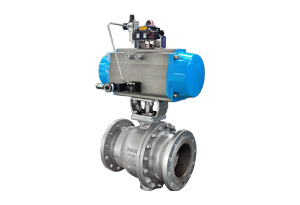Mar. 18, 2021
How To Use a Ball Valve
The ball valve is a device used to cut off, distribute and change the flow direction of the medium in the pipeline. In use, it only needs to be rotated 90 degrees, and it can be tightly closed with a small torque. What should I pay attention to when using ball valves? O ball valve suppliers introduce the precautions for using ball valves.
1. Disassembly operations must be performed after confirming that the pressure on the upstream and downstream pipelines of the ball valve has been relieved.
2. Non-metal parts should be taken out of the cleaning agent immediately after cleaning, and should not be soaked for a long time.
3. During the assembly process, the bolts on the flange must be tightened symmetrically, gradually, and evenly.
4. The cleaning agent should be compatible with the rubber parts, plastic parts, metal parts, and working medium (such as gas) in the ball valve. When the working medium is gas, gasoline can be used to clean metal parts. Non-metal parts should be cleaned with pure water or alcohol.
5. A single ball valve assembly after disassembly can be immersed and cleaned. For non-metallic parts that are not decomposed, they can be wiped with a clean muslin cloth impregnated with a cleaning agent (to prevent fibers from falling off and sticking to the parts). When cleaning, all grease, dirt, glue, dust, etc. stuck on the wall must be removed.
6. When disassembling and reassembling the ball valve, care must be taken to prevent damage to the sealing surface of the parts, especially non-metal parts. Special tools should be used when removing O-rings.
7. After cleaning, wait for the wall cleaner to evaporate (you can wipe it with a non-cleaning silk cloth) before assembling, but do not leave it for a long time, otherwise it will rust and be contaminated by dust.
8. New parts also need to be cleaned before assembly.
9. Lubricating grease. Grease should be compatible with ball valve metal materials, rubber parts, plastic parts, and working medium. For example, when the working medium is gas, special 221 greases can be used. Apply a thin layer of grease on the surface of the seal installation groove, apply a thin layer of grease on the rubber seal, and apply a thin layer of grease on the sealing and friction surfaces of the valve stem.
10. During the assembly process, no metal fragments, fibers, grease (except those designated for use) shall be contaminated, adhered to, or stayed on the surface of the parts or enter the cavity.
Before installing the ball valve, prepare the O ball valve for installation.
1. The front and rear pipelines should be coaxial, and the sealing surfaces of the two flanges should be parallel. The pipeline should be able to bear the weight of the ball valve, otherwise, the pipeline must be properly supported.
2. Clean the pipeline before and after the valve to remove all impurities such as oil stains and welding slag in the pipeline.
3. Check the mark of the ball valve and check whether the ball valve is in good condition. Open and close the valve several times to confirm that it is working properly.
4. Remove the protective parts on the connecting flanges at both ends of the ball valve.
5. Check the valve hole, remove any possible dirt, and then clean the valve hole. Even tiny foreign particles between the valve seat and the ball may damage the sealing surface of the valve seat.

Previous: What Is a Rotary Valve
Headquarter Add.: SUPCON Park, No.309 Liuhe Road, Binjiang District, Hangzhou, 310053, China.
Tel.: +86 571 8111 9774
Fax: +86 571 8111 9737
E-mail: [email protected]
